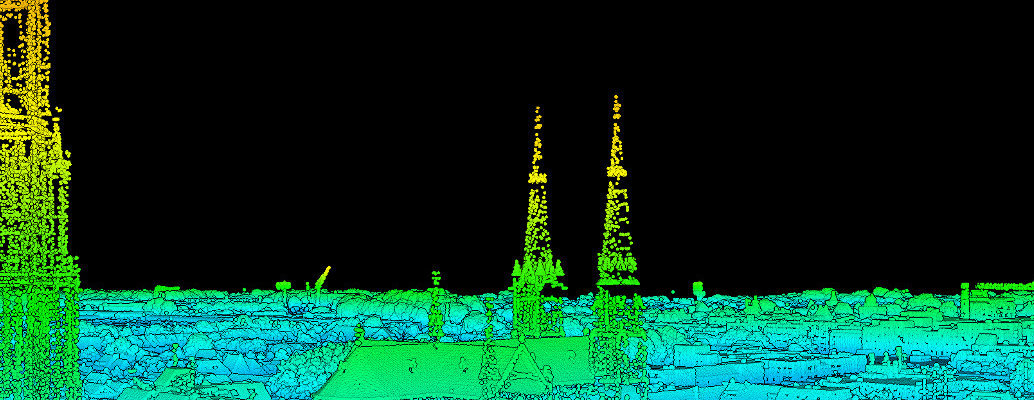Keynotes
Keynote Dr. Ruizhi Chen
Smartphone Positioning and 3D Mapping Indoors

Indoor positioning is one of the core technologies of artificial intelligence (AI) and will play a pivotal role in the upcoming era of AI. However, affected by the complexity of the indoor spaces, it is still challenging to develop a smartphone-based real-time positioning solution indoors with high accuracy, lost-cost and large coverage. This presentation introduces a solution of smartphone-based positioning solution indoors by integrating the measurements of built-in sensors and RF radios together with various high precision positioning techniques including camera re-sectioning, acoustic ranging, and Angle of Arrival from Bluetooth antenna array. The high precise positioning techniques are used to control the error propagation in large indoor space, while the built-in sensors including the accelerometer, gyroscope, magnetometer and RF radios including Wi-Fi and Bluetooth Low Energy are used to fill the gaps among the hot spots covered by the high precise positioning techniques. An smartphone-based SLAM solution for generating the 3D models indoors will be also presented.
Dr. Ruizhi Chen is currently the Director of the State Key Laboratory of Information Engineering in Surveying, Mapping and Remote Sensing, Wuhan University. He used to work an Endowed Chair and Professor in Texas A&M University Corpus Christ, U.S. and Head & Professor of the Department of Navigation and Positioning at the Finnish Geodetic Institute, Finland. He has published two books: Geospatial Computing in Mobile Devices and Ubiquitous Positioning and Mobile Location-Based Services in Smart Phones. He is an author/co-author of more than 170 scientific papers and 5 book chapters. His research results have been selected twice as cover stories in “GPS Worlds”. His Ph.D. students have received 7 international student paper awards, including 3 times of student-wining papers in the Institute of Navigation for 2010, 2012 and 2013. Dr. Chen is the general chair of the IEEE conferences “Ubiquitous Positioning, Indoor Navigation and Location-based Services” ,Editor-in-Chief the Journal of Global Positioning Systems and associate editor of the Journal of Navigation. Dr. Chen was the President of the International Association of Chinese Professionals in Global Positioning Systems (2008) and board member of the Nordic Institute of Navigation (2009-2012). Dr. Chen’s research interests include smartphone positioning indoors/outdoors, context awareness and satellite navigation.
Keynote Rod Thompson
3D Cadastres: 30 years back, 30 years ahead

Looking back thirty years in Cadastral Information, the systems in use were almost universally manually maintained and paper-based. These were therefore quite labour and skill intensive, making a clear case for a digital approach. As this was happening, the concept of 3D “strata rights” was being added to the Queensland Cadastre, with “volumetric parcels” being added in the early 21st century. Early automation used 2D representations and technology. This has gradually progressed through “2D + time” (in a database) to the current interest in “3D + time”, or “4D”.
Looking ahead thirty years, there is little doubt that 3D+t Cadastre will be – if not ubiquitous, at least well established. New technology advances may change the picture dramatically in ways we cannot predict, but some current trends can already be seen that will impact on the Cadastre. Driverless cars and drones may enable “surveys” being done without stepping outside the office. Globalisation will further push international standardization: IS 19152:2048 LADM-v5 (Land Administration Domain Model) may be the enabler for this. Dynamic 3D navigation networks, e.g. for parcel delivery by drones, may be considered real estate objects. Augmented Reality can be used to “see” underground infrastructure, and property information “projected” onto buildings and empty space on a building site. Blockchain is a potential technology for the registration of cadastral plans for the titling process. It is clear that current and emergent technology trends will affect the development path, but the ultimate aim must be kept in mind: a complete chain of spatial development (plan, design, approve, finance, survey, construct, register, use, maintain, destroy), well-connected in 3D+t and sharing information.
In the early 1980’s, Rod Thompson was presented with a challenge. The Department of Mapping and Surveying was in the process of capturing the cadastral maps for the state of Queensland in digital form. The challenge was what to do with the data – how and where to store it, and how to make it accessible. He implemented a 2D+t solution using a relational database, which at the time was counter to conventional wisdom, but is now considered “best practice”. This began an interest he still has in the storage and representation of spatial data, leading to a PhD, and continuing research in the field. He is active in the 3D Cadastral research community through Delft University of Technology and the University of Southern Queensland. He is author (or co-author) of large number of publications, of which 25 are associated with the storage of Cadastral data.
Keynote Claus Nagel
Use cases of 3D City Information Models

Over the last decade, the field of semantic 3D city models has been a topic of intensive research and many cities and even countries worldwide have been active in creating 3D digital twins of their urban environment. This talk aims at presenting examples and use cases of 3D city models in real-world projects from a company’s perspective. It also includes an overview of all-day challenges and new developments such as numerical multi-physics simulations on top of 3D city and BIM models for wind field analyses, acoustics and noise dispersion, flooding scenarios or detonation wave propagation.
Dr. Claus Nagel is CTO of the company virtualcitySYSTEMS GmbH located in Berlin, Germany. virtualcitySYSTEMS is a leading expert in the field of 3D city modelling and provides software solutions for the management, distribution, web-based presentation as well as analysis and simulation of massive 3D geo data based on open standards and interfaces. Dr. Claus Nagel graduated as Master of Science at the University of Applied Sciences Karlsruhe in 2007, and worked on early methods for the conversion from BIM/IFC to OGC CityGML in his Master’s thesis. From 2007 to 2013, he was research assistant in the research group of Prof. Dr. Thomas H. Kolbe at the Institute for Geodesy and Geoinformation Science at Technische Universität Berlin. In his PhD thesis “Spatio-Semantic Modelling of Indoor Environments for Indoor Navigation”, Dr. Nagel presented a framework for the representation of indoor spaces addressing indoor navigation challenges such as context-aware path planning, localization, tracking and guidance. Concepts of this research work were adopted for the OGC IndoorGML standard. Since 2008, he is vice chair of the CityGML Standards Working Group at OGC and co-editor of the CityGML and IndoorGML standards. Dr. Nagel is a core developer and head of the steering group of the open source CityGML database solution 3D City Database.
Keynote Antonio Jara
Smart Destinations: Challenges and opportunities to create sustainable smart cities in the data economy

Antonio J. Jara (CEO), founder of HOP Ubiquitous S.L. (www.hopu.eu), vice-chair of the IEEE Communications Society Internet of Things Technical Committee, and adjoint scientifique in the University of Applied Sciences Western Switzerland. He did his PhD (Cum Laude) at the University of Murcia (UMU), Spain. These PhD results present a novel way to connect objects to Internet-enabled platforms in an easy, secure and scalable way. He also carried out a MBA and entrepreneurship formation in the ENAE business school and UCAM (2012). He received entrepreneurship awards from ENAE (sponsored by SabadellCAM financial services), emprendeGo (sponsored by Spanish government), IPSO Alliance Award (Sponsored by Google) for its disruptive innovation in the IoT, selected and mentored by the acceleration program FABULOUS (part of the FIWARE EU project). Antonio Jara as part of HOP Ubiquitous is focused on the Smart Cities market with solutions for citizens engagements, tourism, active participation, physical web and environmental monitoring (air quality sensors) in projects such as ENIAC SAFESENS, interoperability / pilots (SmartSDK, Synchronicity, Organicity, BeinCPPS) and also in several actions related to security/privacy (INPUT and FORTIKA). Antonio Jara has also participated in over 100 international events about Internet of Things as Speaker, over 100 international publications / papers (~2700 citations and impact factor h=28), he holds several patents in the IoT domain and finally he has advised in the IoT domain to companies such as Microsoft and Fujitsu.
Keynote Dorine Burmanje
Netherlands Cadastre and UN-GGIM Expert Group on Land Administration and Management

Dorine Burmanje is the CEO of Kadaster, the Netherlands’ Cadastre, Land Registry and Mapping Agency which collects and registers administrative and spatial data on property and the rights involved. This also goes for ships, aircraft and telecom networks. Doing so, Kadaster protects legal certainty. Kadaster is also responsible for national mapping and maintenance of the national reference coordinate system. Furthermore, it is an advisory body for land-use issues and national spatial data infrastructures.
Dorine Burmanje’s international orientation is reflected in her active involvement as Co-Chair of the United Nations initiative on Global Geospatial Information Management (UN-GGIM).
